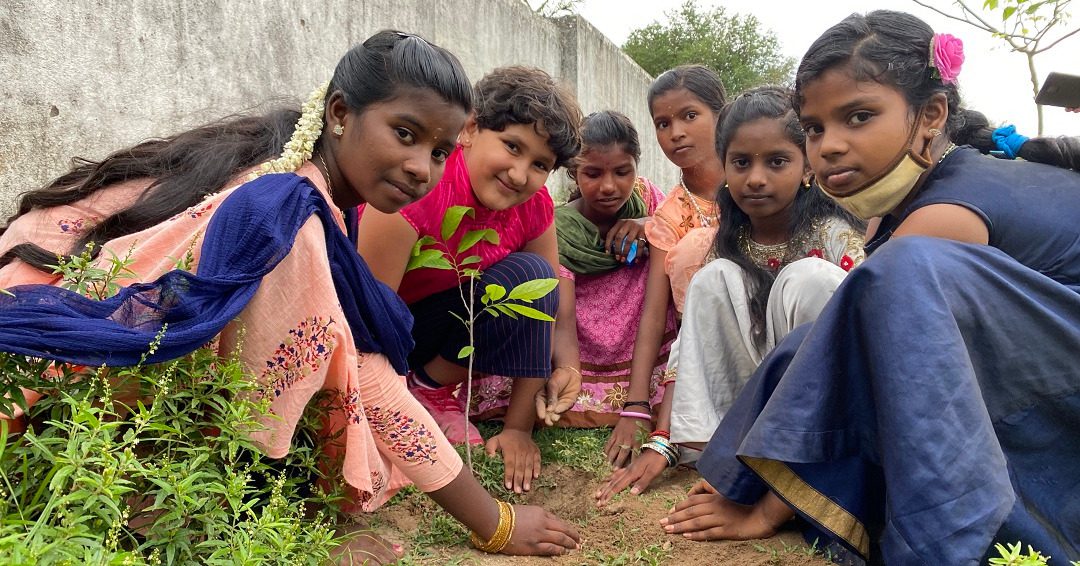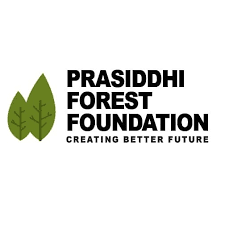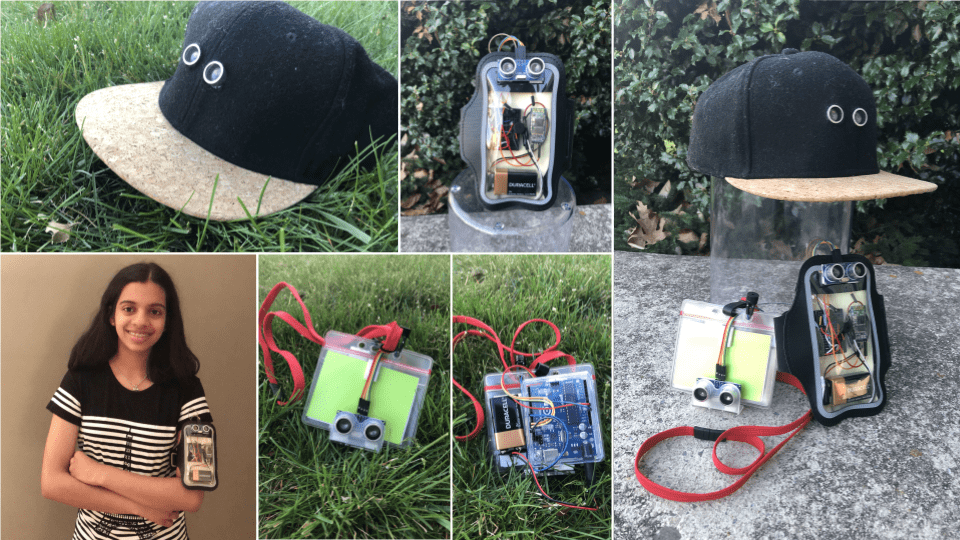“Ever seen a bird or squirrel swipe a credit card for food? Or an animal pay for clothes? Only humans pay for our existence on this planet. The reason many (might) give is advancement. But what kind of advancement is this?” laments Prasiddhi Singh, a nine-year-old environmentalist whose efforts to create a greener planet start with a call to action. Prasiddhi speaks about plausible solutions to climate change that she began by nurturing numerous fruit forests. Today, her initiatives and NGO have won many accolades and awards. The youngest recipient of the Pradhan Mantri Rashtriya Bal Puraskar 2021, her intrinsic connect with nature is remarkable.
The eco-warrior from Tamil Nadu who began her “green activist” journey at just four, has 19 fruit forests to her credit, and is now on a mission to plant 1 lakh trees by 2022. “Each of us can make a significant contribution. But we need to try to create change. I have been close to nature since I was two, and I always knew that I had to do something for the planet,” Prasiddhi opens up to Global Indian in an exclusive interview.
A nature lover
The Mumbai-born Prasiddhi was only 21 days old when she shifted to Tamil Nadu after her father, who is an automotive engineer at Mahindra & Mahindra transferred to Chengalpattu. Those new surroundings were the perfect catalyst in helping her form an unconditional bond with nature. “Since I was two, I have drawn inspiration from nature. The trees taught me to never give up, and grow in any condition. The bees taught me the meaning of collaboration, and from the sea, I learnt to celebrate all phenomenon – high tide or low tide,” says the student at Mahindra World School.
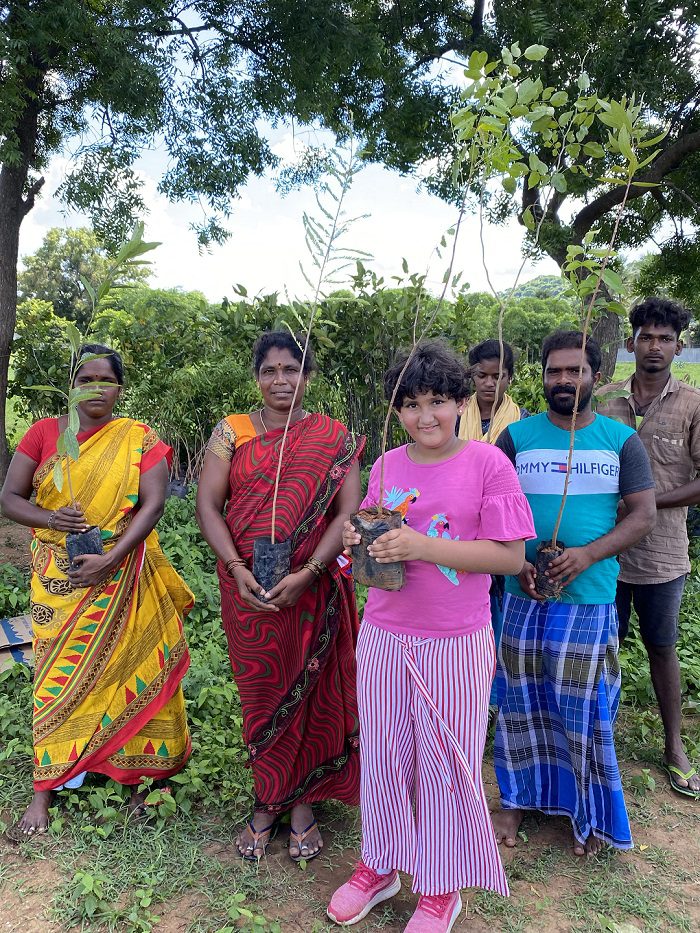
Prasiddhi Singh planting trees with her eco-army.
The nature enthusiast started planting saplings after witnessing the devastating loss of tree cover in the 2016 Vardah cyclone. “So many trees were uprooted, and it felt like they were crying. It made me sad. I knew I had to do something,” she recalls. So, she rolled up her sleeves, and got her hands dirty, literally. At age four, she participated in plantation drives around her neighbourhood, engaged with NGOs and like-minded folk. She now pledges to plant 1 lakh trees. “Till now, I have been successful in creating 19 fruit forests and planting 23,000 trees,” reveals the proud environmentalist. Located in in Chengalpattu, Kanchipuram, Puducherry, Kanyakumari and Chennai, the fruit tree forests bear mangoes, amlas, jamuns, guavas, jackfruits and custard apples.
Stepping up for a cause
Giving nature a chance to breathe again, the little girl with big ideas started the Prasiddhi Forest Foundation in 2018 in Chengalpattu with an intent to increase green cover, nurture biodiversity and make recycling a way of life. “I formed an unconditional bond with nature and this has helped me understand my power. Like a 4 mm seed grows into a 100 feet tall tree, I know that I should never underestimate my power even if I am just a child. I can make a significant contribution in creating an impact,” says the TedX speaker.
How she funds these initiatives give you a hint of her resourcefulness. Prasiddhi has formed an eco-army of individuals who source funds – Selling bookmarks, pencils and grow kits, Singh has also done it all. “During the pandemic, I raised funds by taking online webinars and sessions on how to become an impact creator. The prize money I received from Pradhan Mantri Rashtriya Bal Puraskar was donated to my NGO. I contribute every single penny I receive,” enthuses Prasiddhi.
The girl who met Prime Minister Narendra Modi when she won the award is also a deep thinker. “They say with great power comes great responsibility. The award made me more conscious about my responsibility. Prime Minister Narendra Modiji made me take three sankalpas (promises). Be regular in whatever tasks I do and persevere, keep my promise of working for the nation and be humble,” says the youngest fruit forest creator.
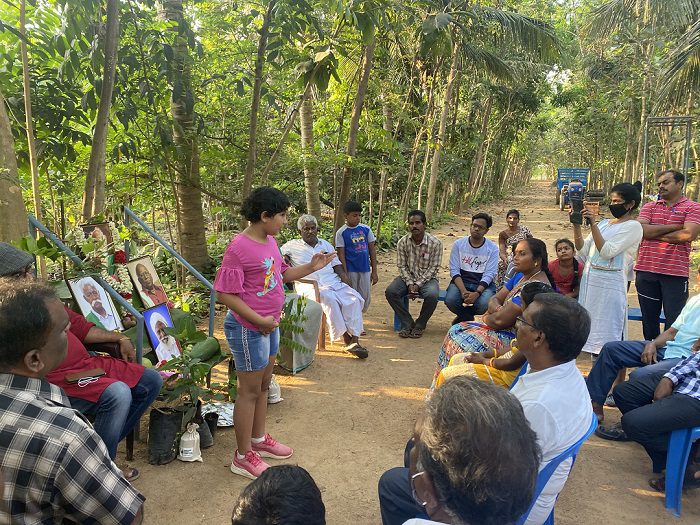

Prasiddhi Singh creating awareness about conservation of trees.
Having received the highest civilian award for children is no mean feat, and she is already an impact creator. “Trees never eat their fruits or rivers don’t drink their water. Nature has made me understand the meaning of service,” says the Class 4 girl with a vision that takes one aback.
An environmentalist with a cause
Her G3 project – Generate your oxygen, grow your food and gift the community, she hopes will help create a sustainable environment by connecting with people through online or offline sessions, and providing eco kits to help them connect with nature.
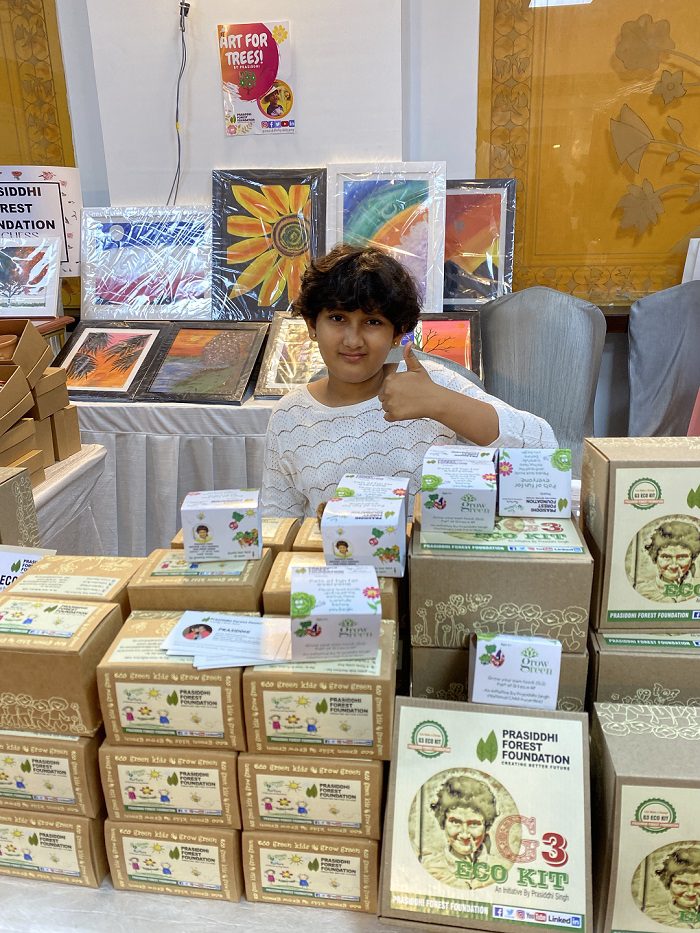

Prasiddhi Singh with her G3 project eco kit.
Prasiddhi loves to skate, do yoga, doodle and cycle. She has also represented the country at the Harvard World Model United Nations. “It was inspiring as I was the youngest keynote speaker. It made me realise that people want to create an impact by contributing to society but at times, they don’t know what to do. The new generation is aware and feels responsible. Today, we just form 25 percent of the population but we are 100 percent of the future. Our actions matter,” Singh believes.
Prasiddhi, who found her biggest cheerleaders in her guru Swami Niranjananda Saraswati and her maternal grandfather, is deeply inspired by Good Night Stories for Rebel Girls: 100 Tales of Extraordinary Women as it helped her understand the need to stand up for change. “I learnt that despite struggles and challenges, these women brought (about) change. I realised that I don’t need to be a grown-up to make a change,” adds the daughter who was influenced by stories about her parents’ childhood amidst nature.
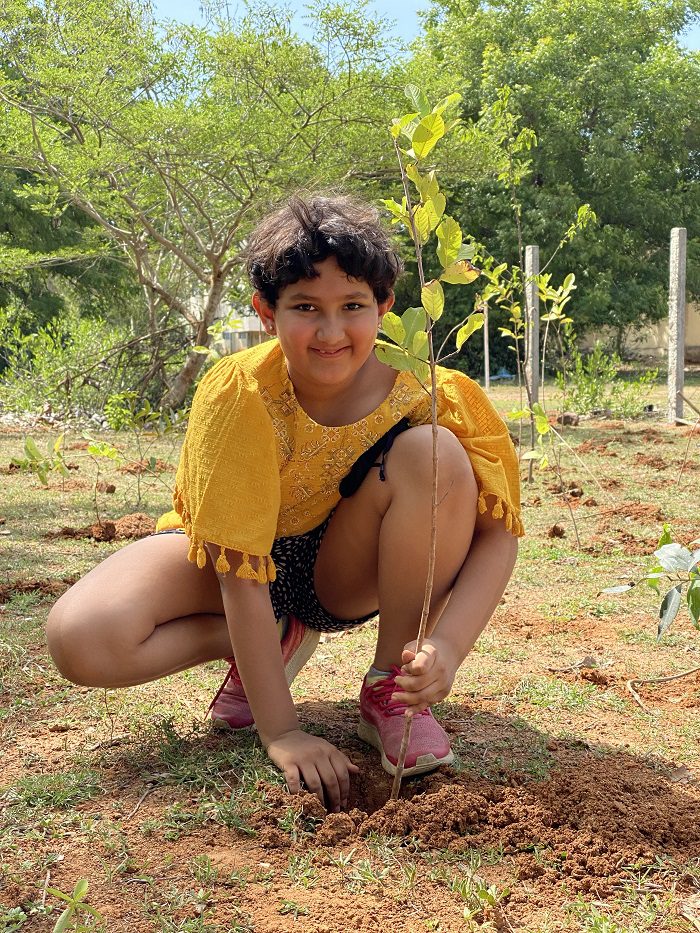

Prasiddhi Singh planting a sapling.
Today, Prasiddhi wants everyone to take small steps towards creating a healthy planet. “The murmurs of discontent of the motherland have gone unnoticed for a while but now we have to address reality. The world is undergoing a climate crisis. Rather than looking up to the government and leaders, we should focus on the actions we can take to make a change. It can be as simple and small as – saving water, planting trees, or saving electricity. Every action counts and can create an impact,” she signs off.
Follow Prasiddhi Singh on Twitter

